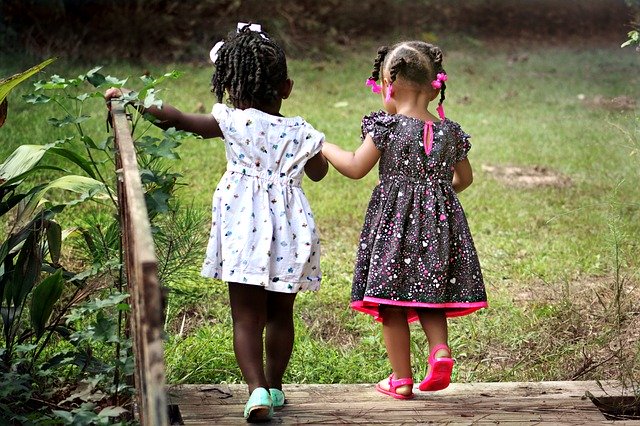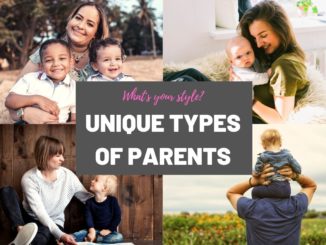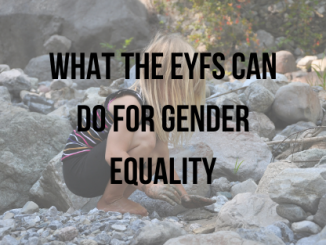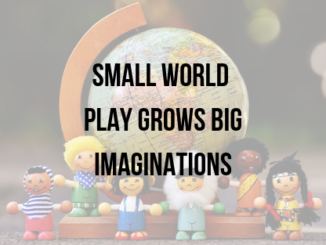Between the ages of 0-5 children experience and explosion of language, from being able to form no words to speaking in full sentences. The Early Learning Goal for the end of the EYFS reads;
“Children express themselves effectively, showing awareness of listeners’ needs. They use past, present and future forms accurately when talking about events that have happened or are to happen in the future. They develop their own narratives and explanations by connecting ideas or events.”
To go from no words to such a complex range of skills is quite a feat, but the vast majority of children do just that!
When we talk about children learning to speak their first language (or languages in bilingual homes) we call this ‘language acquisition’ in contrast to learning a foreign language which is generally referred to as ‘language learning’. This distinction is important as the process by which our first language is learnt is extremely different to learning to speak another language.
Why do we need language?
Language is a uniquely human trait, some other species have a rudimentary language but the complexities that we see in human language are unparalleled elsewhere.
Crystal (1997, cited in Harley [2003]) suggested that human language has 8 main functions:
- To express emotion
- For social interaction
- To make use of sounds
- To attempt to control the environment
- To record facts
- To think
- To express identity
- For humour
When we think about our own everyday experiences of language, we can see that this is reflective of our experience. So how then do children acquire the language needed in order to perform these 8 functions? As with most things in Early Years, there are a range of suggestions.
Nativist theories of language acquisition
Nativist theories propose that within human development there exists a consistent trajectory of language development which transcends cultures and languages (Chomsky, 1965, 1980). In order to support this, Noam Chomsky hypothesised that humans possessed some kind of genetic “language acquisition device” (Chomsky, 1965) and evidenced this by stating that all human languages share a number of properties, children are observed to know things about language despite receiving different input, and all children eventually arrive at the same grammar, for example, despite receiving varied input (Chomsky, 1957) These theories about language acquisition focus heavily on the biological side of the coin.
Vygotsky
According to Vygotsky’s(1978) theory of social constructivism, it is mainly social interactions that drive development forward and so, adults, or more competent peers, help children to achieve more. The next developmental step, which can be attained with this targeted support, is referred to by Vygotsky as “the zone of proximal development” (ZPD)
Piaget
Piaget (1962) placed a high value on peer-interaction for development as peers share similar world views and capabilities. Infants often perceive others as being like themselves (Meltzoff,2005) and young children, in particular are interested in what their peers are doing . Therefore, interaction with peers is seen as important for development as it allows young children to make sense of and copy another’s behaviour.
Rogoff
Others highlight the importance of children learning through activities with adults, for Rogoff et al. (1993) the interaction between adults and children may be considered an “apprenticeship in thinking” in which children’s understanding of the world is shaped during routine day-to-day activities in interactions with communicating and engaging adults (Rogoff et al.,1993)
The Early Years Foundation Stage
In response to Tickell’s (2011) review of the EYFS, the statutory framework was revised to include seven areas of learning and development, replacing the previous six areas, and grouping them into two categories – prime areas and specific areas. The prime areas are important because they lay the foundations for children’s success in all other areas of learning and of life and are named as:
- Personal, Social and Emotional Development
- Physical Development
- Communication and Language
The prime areas are fundamental to children’s successful learning in the specific areas (Mathematics, Literacy, Understanding the world and expressive arts and design) because he specific areas cannot be encountered in isolation from communication and language or personal, social, emotional and physical development.
The inclusion of communication as a prime area further highlights it’s importance in the Early Years and since children always experience the world through communication, a strong foundation is essential as evidence shows that, if it is not securely in place by age five, it holds children back in other areas of learning and development.
The integrated 2-year review
The Early Years Foundation Stage (EYFS) requires that parents and carers must be supplied with a short written summary of their child’s development in the three prime learning and development areas of the EYFS: Personal, Social and Emotional Development; Physical Development; and Communication and Language; when the child is aged between 24-36 months. Ideally, in the UK, this should take place alongside a Health Visitor as part of the Healthy Child Programme.
The 2-year review is intended to highlight any needs for additional support so that early intervention can take place as earlier intervention is associated with more positive outcomes.
Speech and Language Therapy
For some children, that early intervention may take the form of Speech and Language Therapy. Speech and language therapy provides treatment, support and care for children and adults who have difficulties with communication, and/or with eating, drinking and swallowing.
Speech and language therapists (SLTs) are allied health professionals. They work with parents, carers and other professionals, such as teachers, nurses, occupational therapists and doctors.
What actually happens in Speech and Language Therapy will depend largely on your child’s particular needs and difficulties but will include an assessment of their skills, a plan and some aims to work towards. With young child speech and language therapy will likely take the form of play and games.
References:
Crystal, D. (1997) The Cambridge Encyclopedia of language 2nd ed. Cambridge. Cambridge University Press
Meltzoff, A. N. (2005). Imitation and other minds: The “like me” hypothesis.In S. L. Hurley (Ed.), Perspectives on imitation: From neuroscience to social science (pp. 55–77). Cambridge, MA: MIT Press.
Piaget, J. (1962). Play, dreams and imitation in childhood (C. Gattegno & F. M. Hodgson, Trans.). London, UK: Routledge & Kegan Paul.
Rogoff, B., Mistry, J., Göncü, A., Mosier, C., Chavajay, P., & Heath, S. B. (1993). Guided participation in cultural activity by toddlers and caregivers. Monographs of the Society for Research in Child Development, 58(8), I–179. https://doi.org/ 10.2307/1166109
Tickell, C. (2011). The Early Years: Foundations for life, health and learning: An independent report on the Early Years Foundation Stage to Her Majesty’s Government. Department for Education. Available at: haps://www.gov.uk/governmentipublications/the-early-yearsfoundations-for-life-health-and-learning-an-independent-report-on-the-earlyyears-foundation-stage-to-her-majestys-government
Vygotsky, L. S. (1978). Mind in society: The development of higher psychological processes. Cambridge, MA: Harvard University Press.








